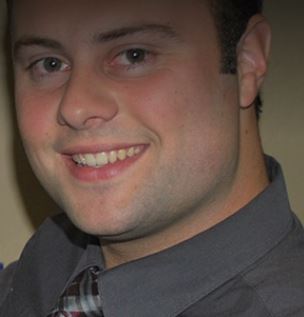“Should you rest after chiropractic adjustment?”
I am a 37 year old male. I want to know if I should rest after chiropractic adjustment?
8 Answers
ChiropractorChiropractor
it really depends on what you are being treated for. If it is a routine adjustment to keep you aligned, your muscles and tendons relaxed, then I would say keep moving and stretching.
Spinal manipulation should be performed on spinal joints that have partial or total loss of motion. And things in motion tend to stay in motion. I don’t believe rest is necessarily needed after spinal manipulation, no. The opposite is likely true.
Humans do not have control over the movement of their own individual spinal joints like we do with most of the human body’s joints (e.g., knees, shoulders, hips, ankles, etc.). We can’t move individual spinal joints when they have lost or have reduced range of motion (ROM). But a trained chiropractor CAN move a patient’s individual spinal joints with great specificity. Chiropractic physicians are trained to move spinal joints that do not move well or at all when performing spinal manipulation (which is, by the way, only ONE of hundreds of physical medicine therapies chiropractors perform. Others are therapeutic rehabilitative exercises, just like at a physical therapist).
That movement is important, since osteoarthritis reduces spinal joint motion, and those joints rely on movement to stay healthy. Other than osteoarthritis, muscle strains and ligament sprains (ligament tears) can also reduce the ROM of the spinal joints. So can poor posture and lack of strength and flexibility, and muscle imbalances.
As an example, part of the rehabilitation of sprains (ligament tears of varying degrees) is improving ROM. That’s possible for patients to do on their own for most of the body’s joints (usually with supervision by the chiropractor in-office). But not the spinal joints. You need a trained professional to move individual spinal joints. The best a person can do on their own is move groups of spinal joints (since our spinal muscles control and move groups of spinal joints, but do not move those joint individually).
So, if you sprain a spinal joint, which is a very common—sometimes devastating—injury in sports and especially motor vehicle crashes, you will very likely need a chiropractic physician to perform spinal manipulation to rehab the injured, individual spinal joints with great specificity.
So, I firmly believe that you could stretch gently after spinal manipulation, and continue to just move normally. Let pain be your guide if you came to the chiropractor for pain treatment. That is, don’t do anything that increases pain!
All that said, Newton’s Laws state that things in motion tend to stay in motion. The procedure of spinal manipulation creates improved range of motion in individual spinal joints. You don’t want you neck, upper or lower back to lose that newly acquired ROM (range of motion).
So, keep moving! Just don’t do anything that hurts or increases pain.
Humans do not have control over the movement of their own individual spinal joints like we do with most of the human body’s joints (e.g., knees, shoulders, hips, ankles, etc.). We can’t move individual spinal joints when they have lost or have reduced range of motion (ROM). But a trained chiropractor CAN move a patient’s individual spinal joints with great specificity. Chiropractic physicians are trained to move spinal joints that do not move well or at all when performing spinal manipulation (which is, by the way, only ONE of hundreds of physical medicine therapies chiropractors perform. Others are therapeutic rehabilitative exercises, just like at a physical therapist).
That movement is important, since osteoarthritis reduces spinal joint motion, and those joints rely on movement to stay healthy. Other than osteoarthritis, muscle strains and ligament sprains (ligament tears) can also reduce the ROM of the spinal joints. So can poor posture and lack of strength and flexibility, and muscle imbalances.
As an example, part of the rehabilitation of sprains (ligament tears of varying degrees) is improving ROM. That’s possible for patients to do on their own for most of the body’s joints (usually with supervision by the chiropractor in-office). But not the spinal joints. You need a trained professional to move individual spinal joints. The best a person can do on their own is move groups of spinal joints (since our spinal muscles control and move groups of spinal joints, but do not move those joint individually).
So, if you sprain a spinal joint, which is a very common—sometimes devastating—injury in sports and especially motor vehicle crashes, you will very likely need a chiropractic physician to perform spinal manipulation to rehab the injured, individual spinal joints with great specificity.
So, I firmly believe that you could stretch gently after spinal manipulation, and continue to just move normally. Let pain be your guide if you came to the chiropractor for pain treatment. That is, don’t do anything that increases pain!
All that said, Newton’s Laws state that things in motion tend to stay in motion. The procedure of spinal manipulation creates improved range of motion in individual spinal joints. You don’t want you neck, upper or lower back to lose that newly acquired ROM (range of motion).
So, keep moving! Just don’t do anything that hurts or increases pain.
No, you do not have to. For example, athletes can be adjusted in the field of play. A common side effect is to feel tired after treatment, but if you have the range of motion and are pain free enough to be active after treatment, you can continue on with normal activities.









